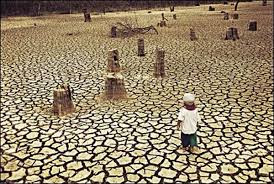Forests are more than just a collection of trees—they are integrated ecosystems and home to some of the most diverse life on Earth. They are also major players in the carbon and water cycles that make life possible. When forests are lost or degraded, their destruction sets off a series of changes that affect life both locally and around the world.
REDUCED BIODIVERSITY
About 80% of the world’s documented species can be found in tropical rainforests—some of the forests most vulnerable to deforestation. When species lose their forest homes, they are often unable to subsist in the small fragments of forested land left behind. They become more accessible to hunters and poachers, their numbers begin to dwindle and some eventually go extinct. Even localized deforestation can result in extinctions as many unique species exist in small isolated geographic locations in the world.
INCREASED GREENHOUSE GAS EMISSIONS
Forests help to mitigate carbon dioxide and other greenhouse gas emissions, but they become carbon sources when they are cut, burned or otherwise removed. Tropical forests hold more than 210 gigatons of carbon, and deforestation represents around 15% of greenhouse gas emissions. These greenhouse gas emissions contribute to rising temperatures, changes in patterns of weather and water and an increased frequency of extreme weather events. For example, in Sumatra, rainforests on deep peatlands are being cleared, drained and converted to pulp plantations, contributing to Indonesia’s high greenhouse gas emissions. Changes in climate can affect forest-dwelling creatures by altering their habitats and decreasing availability of food and water. Some will be able to adapt by moving to higher elevations or latitudes, but species losses may occur.
DISRUPTION OF WATER CYCLES
Trees play a key role in the local water cycle by helping to keep a balance between the water on land and water in the atmosphere. But when deforestation or degradation occurs, that balance can be thrown off, resulting in changes in precipitation and river flow.
INCREASED SOIL EROSION
Soil erosion in Africa.
Without trees to anchor fertile soil, erosion can occur and sweep the land into rivers. The agricultural plants that often replace the trees cannot hold onto the soil. Many of these plants—such as coffee, cotton, palm oil, soybean and wheat—can actually exacerbate soil erosion. Scientists have estimated that a third of the world’s arable land has been lost through soil erosion and other types of degradation since 1960. And as fertile soil washes away, agricultural producers move on, clearing more forest and continuing the cycle of soil loss.
DISRUPTED LIVELIHOODS
Millions of people around the world depend on forests for hunting, gathering and medicine, forest products such as rubber and rattan, and small-scale agriculture. But deforestation disrupts the lives of these people, sometimes with devastating consequences. In the Greater Mekong in Southeast Asia, where land tenure systems are weak, deforestation has contributed to social conflict and migration. In Brazil, poor people have been lured from their villages to remote soy plantations where they may be abused and forced, at gunpoint, to work under inhumane conditions.



No comments:
Post a Comment